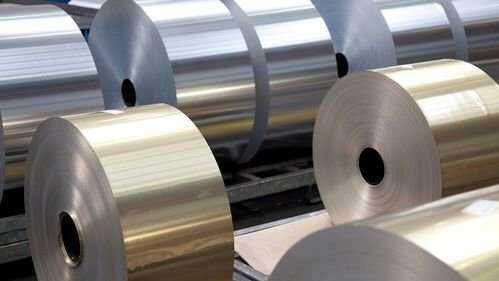 Energy Efficiency
Energy EfficiencyBusiness Practices
Aluminum Industry: 10 Emerging Technologies for Energy-efficiency and GHG Emissions Reduction
Summary
Aluminum production accounts for about 1% of global GHG emissions. Annual world aluminum demand is expected to increase two- to three-fold by 2050. The bulk of growth in consumption of aluminum will take place in China, India, the Middle East, and other developing countries. Report is published on LBNLs website and can be downloaded from this Link. Please feel free to contact me if you have any question about this article. About 10 emerging technologies for the aluminum industry were covered in the report. Click here to read the full report on this topic. For more information on the aluminum
Back to the page you came from: www.lBNls.org.uk/s/ logo/ logon/lBNL/lbnl/lbnlll/bns/bnL/bnz/bgov/bcs/bncl/BnLs/btv/bbi/bouncil/b.
Open full article
Aluminum Industry: 10 Emerging Technologies for Energy-efficiency and GHG Emissions Reduction
Aluminum production is one of the most energy-intensive industrial processes worldwide. Although about a third of global aluminum production uses electricity from hydropower sources, the increasing use of coal as the primary fuel for electricity for aluminum production in many countries means that aluminum production is still a significant source of greenhouse gas (GHG) and greenhouse gas emissions. According to the International Energy Agency (IEA), the aluminum industry accounts for about 1% of global GHG emissions (IEA 2012).
Annual world aluminum demand is expected to increase two- to three-fold by 2050. The bulk of growth in consumption of aluminum will take place in China, India, the Middle East, and other developing countries, where consumption is expected to nearly quadruple by 2025. To meet this increased demand, production is projected to grow from approximately 51 million tonnes (Mt) of primary aluminum in 2014 to 89-122 Mt in 2050 (IEA 2012). This increase in aluminum consumption and production will drive significant growth in the industry’s absolute energy use and GHG emissions.
Studies have documented the potential to save energy by implementing commercially-available energy-efficiency technologies and measures in the aluminum industry worldwide. However, today, given the projected continuing increase in absolute aluminum production, future reductions (e.g., by 2030 or 2050) in absolute energy use and GHG emissions will require further innovation in this industry. Innovations will likely include development of different processes and materials for aluminum production or technologies that can economically capture and store the industry’s GHG emissions. The development of these emerging technologies and their deployment in the market will be a key factor in the aluminum industry’s mid- and long-term climate change mitigation strategies.
Many studies from around the world have identified sector-specific and cross- energy-efficiency technologies for the aluminum industry that have already been commercialized. However, information is scarce and scattered regarding emerging or advanced energy-efficiency and low-carbon technologies for the aluminum industry that have not yet been commercialized.
In 2016, Cecilia Springer of Lawrence Berkeley National Laboratory and I wrote a report that consolidated available information on emerging technologies for the aluminum industry with the goal of giving engineers, researchers, investors, aluminum companies, policy makers, and other interested parties easy access to a well-structured database of information on this topic.
Information about 10 emerging technologies for the aluminum industry was covered in the report and was presented using a standard structure for each technology. Table below shows the list of the technologies covered.
Table 1. Emerging energy-efficiency and CO2 emissions-reduction technologies for the aluminum industry (Springer and Hasanbeigi, 2016)
 |
|---|
Shifting away from conventional processes and products will require a number of developments including:
- education of producers and consumers;
- new standards;
- aggressive research and development to address the issues and barriers confronting emerging technologies;
- government support and funding for development and deployment of emerging technologies;
- rules to address the intellectual property issues related to dissemination of new technologies; and
- financial incentives (e.g. through carbon trading mechanisms) to make emerging low-carbon technologies, which might have a higher initial costs, competitive with the conventional processes and products.
Our report is published on LBNL’s website and can be downloaded from this Link. Please feel free to contact me if you have any question.
Other articles on energy intensive industry by Ali Hasanbeigi
- 36 emerging technologies for energyefficiency and GHG emissions reduction in the pulp and paper industry
- Infographic: energy use and emission in the cement industry
Best ideas for Energy Efficiency
References:
- Springer, Cecilia; Hasanbeigi, Ali and Price, Lynn (2016). Emerging Energy Efficiency and CO2 Emissions Reduction Technologies for the Aluminum Industry. Berkeley, CA: Lawrence Berkeley National Laboratory. LBNL-1005789
- International Energy Agency, and Organisation de coopération et de développement économiques. 2012. Energy Technology Perspectives: Scenarios & Strategies to 2050: In Support of the G8 Plan of Action. Paris: OECD, IEA.
Originally published here



